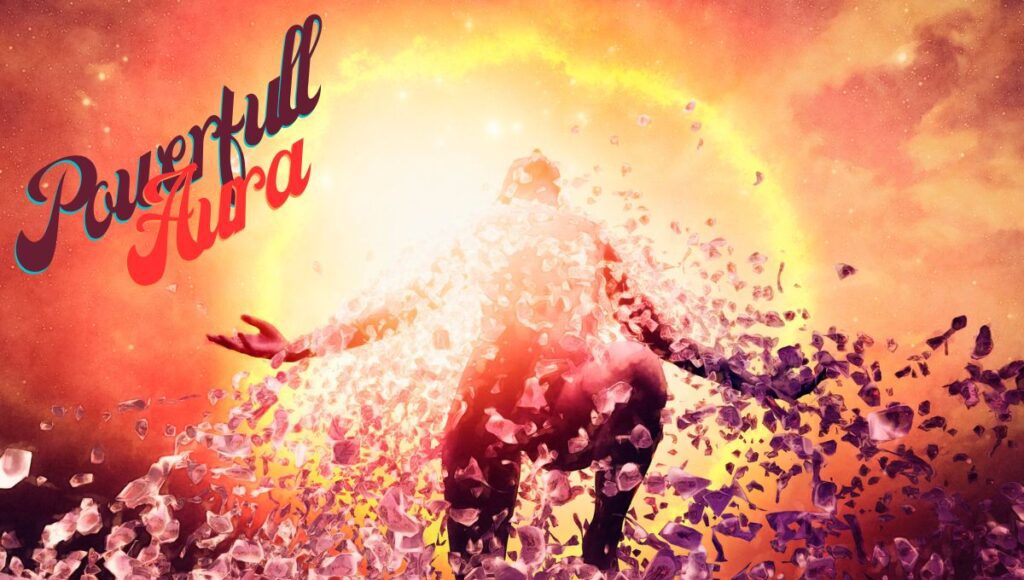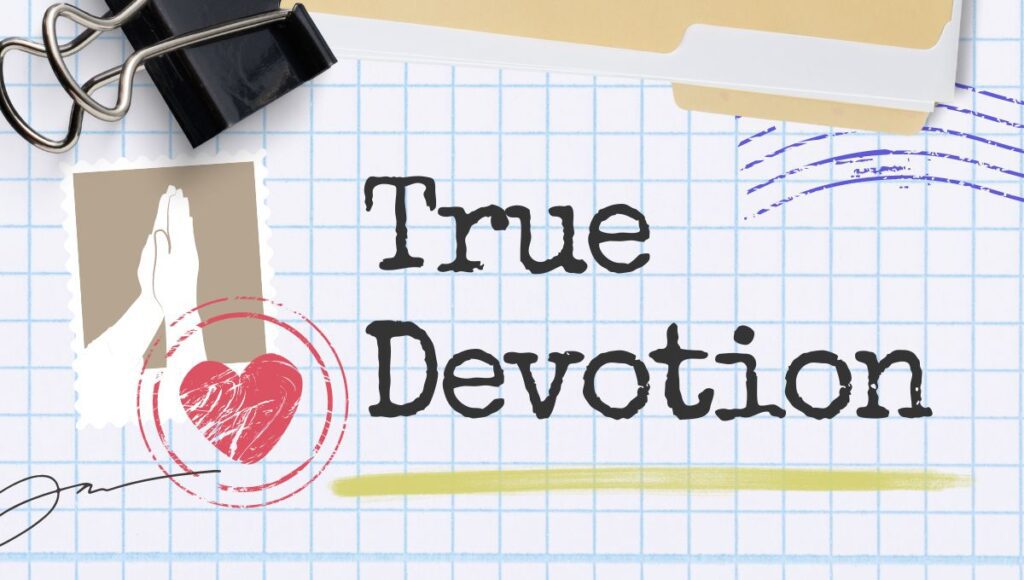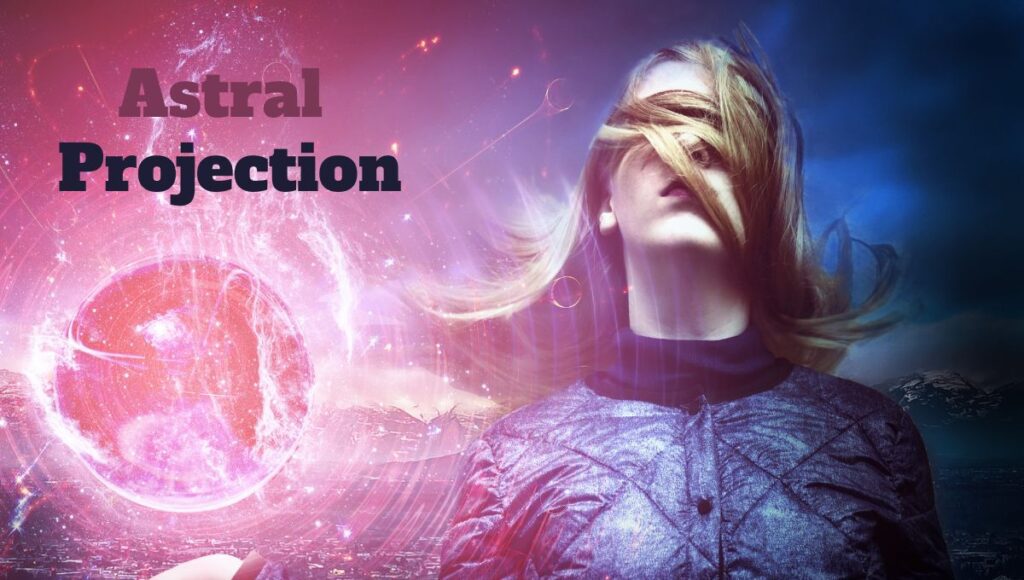10 Amazing Facts You Didn’t Know About Krishna Janmashtami and Why You Should Celebrate It
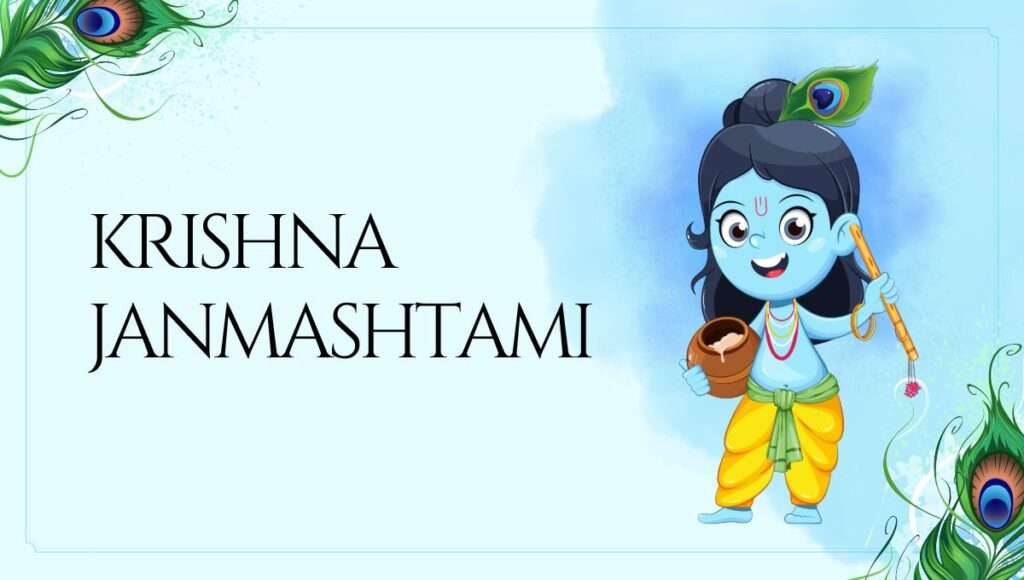
Hello, my dear friends! 😊
I hope you are all doing well and enjoying your life. 🙌
Today, I have a special topic to share with you. It is about one of my favorite festivals, Krishna Janmashtami. 🎉
Do you know what Krishna Janmashtami is? 🤔
If you don’t, don’t worry. I will tell you everything you need to know about it. 😊
And if you do, I bet you will still learn something new and interesting from this blog post. 😍
Because I am going to share with you 10 amazing facts that you may not know about Krishna Janmashtami and why you should celebrate it. 😮
Are you curious to know what these facts are? Then let’s dive in! 😊
Fact #1: Krishna Janmashtami is one of the largest religious celebrations in the world

Did you know that Krishna Janmashtami is one of the largest religious celebrations in the world? 🌎
Yes, you heard me right. It is not a small or local festival. It is a global and universal festival. 😊
More than 930 million people celebrate Krishna Janmashtami across the globe. That’s more than the population of Europe and North America combined! 😮
Can you imagine how many people love and worship Lord Krishna, the eighth and most beloved incarnation of Lord Vishnu, the supreme god of Hinduism? 🙏
Krishna Janmashtami is celebrated not only in India, where Krishna was born but also in many other countries where Hinduism or its branches have spread, such as Nepal, Bangladesh, Pakistan, Sri Lanka, Indonesia, Malaysia, Singapore, Thailand, Cambodia, Vietnam, Myanmar, China, Japan, Australia, New Zealand, Fiji, Mauritius, South Africa, Kenya, Tanzania, Uganda, Ghana, Nigeria, Trinidad and Tobago, Guyana, Suriname, Jamaica, Canada, USA, UK, France, Germany, Netherlands, Switzerland, Italy, Spain, Portugal, Greece Russia and many more. 🌏
Krishna Janmashtami is also observed by different sects and traditions within Hinduism, such as Vaishnavism (followers of Vishnu), Smartism (followers of six main deities), Shaktism (followers of Shakti or Devi), Shaivism (followers of Shiva), Ganapatya (followers of Ganesha), Saura (followers of Surya or Sun), and others. 🕉️
Krishna Janmashtami is celebrated in different ways depending on the region and culture. Some of the common festivities include:
- Singing devotional songs or bhajans in praise of Krishna.
- Dancing ecstatically or rasa lila to express love for Krishna.
- Fasting until midnight or nirjala upavasa to purify oneself for Krishna.
- Praying and meditating on Krishna’s form and qualities.
- Reading or listening to Krishna’s stories and teachings from scriptures like Bhagavad Gita and Srimad Bhagavatam.
- Visiting temples or holy places associated with Krishna like Vrindavan and Mathura.
- Offering food and flowers to Krishna’s idols or pictures.
- Dressing up as Krishna or his associates like Radha and gopis.
- Breaking pots of milk or butter or dahi handi to imitate Krishna’s childhood mischief.
Krishna Janmashtami is a festival that celebrates the diversity and unity of the Hindu community. It shows how people from different backgrounds and beliefs can come together to honor and worship one supreme lord, who is the source of all existence, knowledge, and bliss. 🙏
Fact #2: Krishna Janmashtami commemorates the miraculous birth of Lord Krishna
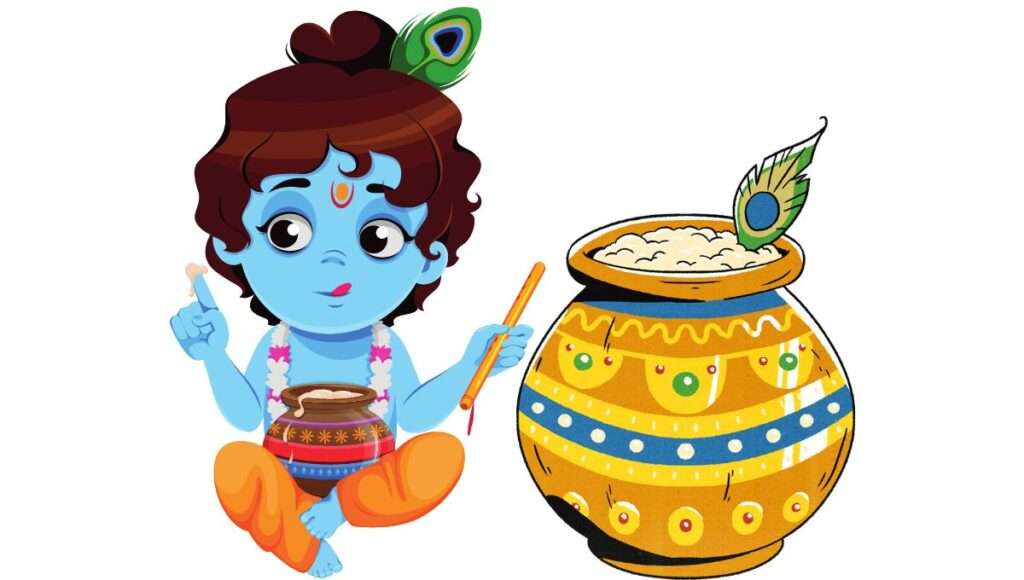
Did you know that Krishna Janmashtami commemorates the miraculous birth of Lord Krishna? 🤔
Krishna was born in a very extraordinary way, unlike any other human being. He was not conceived by the union of a man and a woman but by the divine will of Lord Vishnu, who decided to descend on earth to protect the righteous and destroy the wicked.
Krishna’s parents were Devaki and Vasudeva, who were the princess and prince of Mathura, a city in northern India. They were devout devotees of Lord Vishnu and had been married for a long time, but had no children.
One day, Devaki’s brother Kamsa, who was the king of Mathura, decided to kill his sister and her husband because he had heard a prophecy that their eighth son would kill him and end his tyranny. He imprisoned them in a dungeon and killed their first six sons as soon as they were born.
However, Lord Vishnu intervened and transferred the seventh son of Devaki and Vasudeva to the womb of Rohini, another wife of Vasudeva, who lived in Vrindavan, a village near Mathura. This son was named Balarama, who became Krishna’s elder brother and best friend.
When the time came for the eighth son to be born, Lord Vishnu himself appeared in the prison cell of Devaki and Vasudeva and told them that he was going to be their son. He also told them to take him to Vrindavan and exchange him with the daughter of Nanda and Yashoda, who were cowherds living there. He assured them that he would protect them from Kamsa and restore peace and justice in the world.
As soon as Krishna was born, he manifested his four-armed form with a conch, a discus, a mace, and a lotus in his hands. He also wore a crown, jewels, and yellow garments. He looked like a miniature version of Lord Vishnu himself. Devaki and Vasudeva were overjoyed to see their divine son and bowed down to him with reverence and love.
Then Krishna changed his appearance to that of a normal baby boy with a dark complexion, curly hair, and lotus-like eyes. He smiled at his parents and asked them to take him to Vrindavan as instructed by Lord Vishnu. He also performed a miracle by making all the guards fall asleep and opening all the doors and gates of the prison. He also made the river Yamuna part of its waters and created a serpent named Shesha to protect him from the rain.
Vasudeva carried Krishna in a basket on his head and crossed the river Yamuna. He reached Vrindavan safely and found Nanda and Yashoda’s house. There he saw that Yashoda had given birth to a baby girl, who was actually an incarnation of Goddess Durga or Shakti. He exchanged Krishna with the baby girl and returned to Mathura with her.
When Kansa came to know that Devaki had given birth to her eighth child, he rushed to the prison cell and tried to kill her. But Vasudeva pleaded with him to spare her life, saying that the child was a girl and not a boy. Kamsa did not listen to him and snatched the baby girl from his hands. He threw her against a wall, hoping to smash her head.
But to his surprise, the baby girl slipped from his hands and flew into the air. She transformed into a goddess with eight arms holding various weapons. She thundered at Kamsa, saying that his killer was already born elsewhere and that he could not escape his fate. She then disappeared into the sky.
Thus Krishna was born in Mathura but grew up in Vrindavan as the son of Nanda and Yashoda. He became known as Gopala or Govinda, meaning the protector or lord of cows. He also became known as Nanda Lala or Yashoda Nandana, meaning the darling or son of Nanda or Yashoda.
Krishna’s birth is symbolic and significant for Hindus in many ways. It shows that:
- God can take any form or gender according to his wish and purpose.
- God can be born in any place or family regardless of their status or wealth.
- God loves and cares for his devotees and comes to their rescue when they are in trouble.
- God is the source of all joy and beauty and manifests them in his creation.
- God is the ultimate teacher and guide and reveals his wisdom and grace to those who seek him.
Fact #3: Krishna Janmashtami celebrates the childhood and youth of Lord Krishna
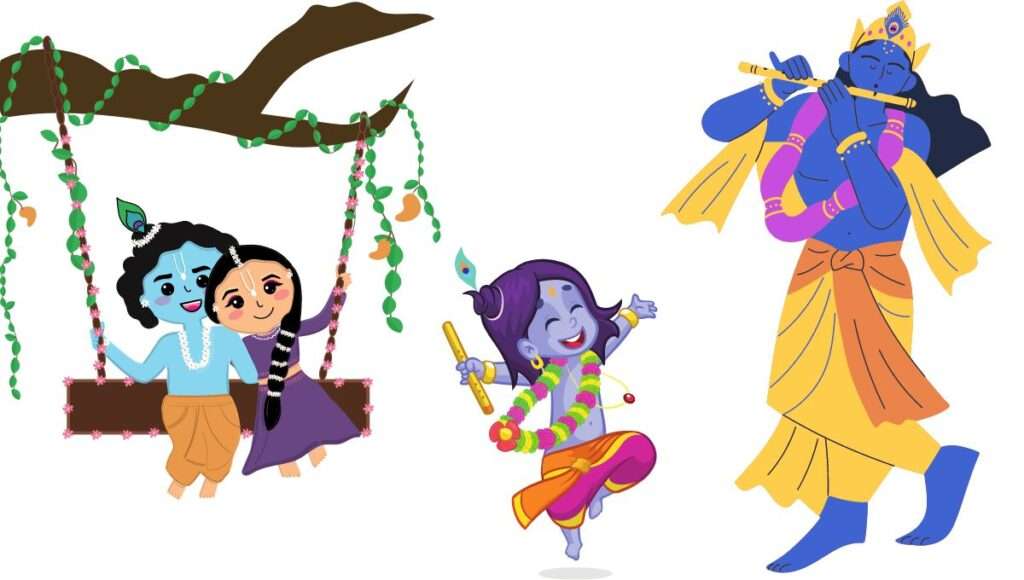
Did you know that Krishna Janmashtami celebrates the childhood and youth of Lord Krishna? 🤔
Krishna’s life in Vrindavan and Mathura is full of wonderful and charming episodes that captivate the hearts and minds of millions of people. He displayed his divine powers, qualities, and pastimes in various ways, enchanting everyone who came in contact with him.
Some of the most popular and beloved stories from Krishna’s life are:
- His mischief with the cowherds and gopis, stealing their butter, milk, yogurt, and clothes, hiding their cows, breaking their pots, teasing them, playing pranks on them, and making them laugh and cry at the same time.
- His love for Radha, his eternal consort, and the embodiment of pure devotion. He danced with her and the other gopis in the moonlit night, creating the divine dance of love or rasa lila. He also played his flute, attracting everyone with his sweet melodies.
- His defeat of various demons sent by Kamsa to kill him, such as Putana, Trinavarta, Aghasura, Bakasura, Vatsasura, Kaliya, Arishtasura, Dhenukasura, Pralambasura, Keshi, Vyomasura, Shishupala, Dantavakra, and others. He also killed Kamsa himself and freed his parents from prison.
- His revelation of his cosmic form or vishvarupa to his mother Yashoda, his friend Arjuna, and his devotee Uddhava. He showed them that he was not only a human child or a friend but also the supreme lord of all universes.
These stories illustrate the different aspects and qualities of Krishna, such as:
- His playfulness or lila shakti, which expresses his joy and creativity in various forms and activities.
- His compassion or karuna shakti, which motivates him to help and protect those who are suffering or oppressed.
- His wisdom or jnana shakti, which enables him to know everything past, present, and future and to teach the highest truth to his followers.
- His power or aishvarya shakti, which empowers him to control everything animate and inanimate and to perform miracles beyond human comprehension.
- His devotion or bhakti shakti, which attracts him to those who love him unconditionally and surrender to him completely.
These stories also suggest some ways to emulate and worship Krishna in daily life, such as:
- Following his teachings in the Bhagavad Gita, which is considered the essence of all scriptures and the perfect guide for living a righteous and fulfilling life.
- Chanting his names and mantras, such as Hare Krishna Hare Krishna Krishna Krishna Hare Hare Hare Rama Hare Rama Rama Rama Hare Hare, which is considered the easiest and most effective way to purify one’s mind and heart and to attain his grace.
- Offering him food and flowers, which is considered a simple but sincere way to express one’s gratitude and affection for him. He accepts even a leaf, a flower, a fruit, or water if offered with love.
- Dressing up as him or his associates, which is considered a fun but meaningful way to remember him and to identify with his qualities. Many children and adults dress up as Krishna or Radha or gopis or cowherds on Krishna Janmashtami.
Krishna Janmashtami is a festival that celebrates the childhood and youth of Lord Krishna. It shows how he lived as a human being but also revealed his divinity in various ways. It also shows how he enjoyed life with his friends and lovers but also taught them the highest goal of life. 🙏
Fact #4: Krishna Janmashtami is a time to start or deepen your spiritual journey
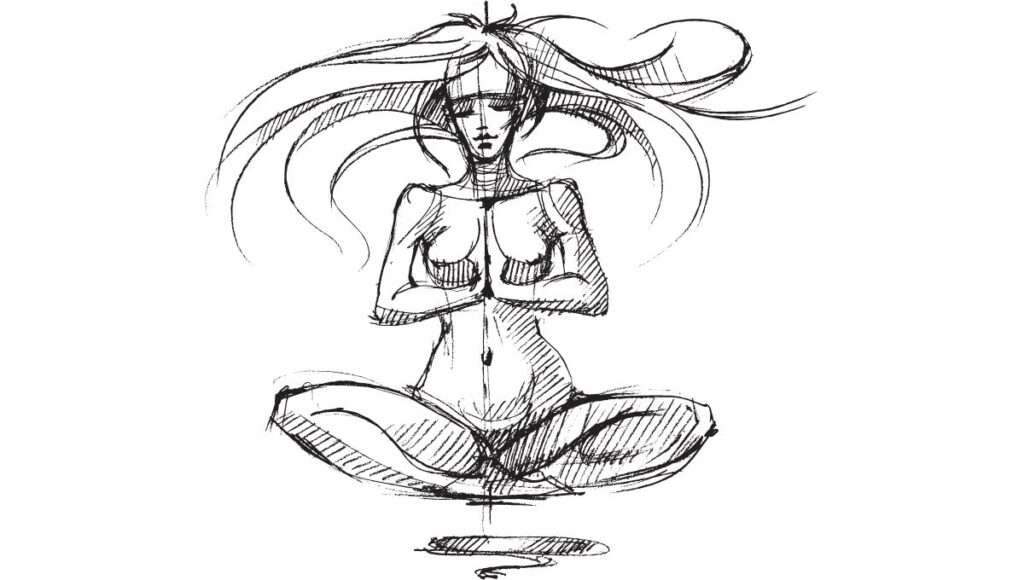
Did you know that Krishna Janmashtami is a time to start or deepen your spiritual journey? 🤔
Krishna Janmashtami is considered an auspicious day to initiate or enhance one’s spiritual practice and connection with the divine. It is believed that on this day,
- Lord Vishnu himself descends on earth as Lord Krishna to bless his devotees with his presence and grace.
- The spiritual energy or shakti of Lord Krishna is more accessible and powerful than on any other day.
- The benefits and rewards of any spiritual activity are multiplied manifold than on any other day.
Therefore, many people take advantage of this opportunity by engaging in various spiritual activities on this day. Some of the common spiritual activities that can be done on Krishna Janmashtami are:
- Meditating on Krishna’s form and qualities, which is considered a direct way to experience his beauty and bliss. One can use a picture or an idol of Krishna or simply visualize him in one’s mind .
- Reading or listening to Krishna’s stories and teachings, which is considered a way to learn from his example and wisdom. One can read or listen to scriptures like Bhagavad Gita and Srimad Bhagavatam or other books or podcasts that explain his life and message.
- Visiting temples or holy places associated with Krishna, which is considered a way to feel his presence and energy. One can visit temples or holy places like Vrindavan and Mathura or other places where he performed his pastimes or where his devotees reside.
- Joining a community of his devotees, which is considered a way to share and express one’s love and devotion for him. One can join a community of his devotees like ISKCON or Hare Krishnas or other groups that follow his teachings and practices.
By doing these spiritual activities on Krishna Janmashtami, one can expect to attain some of the following benefits and rewards:
- Peace or shanti, which is the state of being free from anxiety, stress, fear, anger, and other negative emotions that disturb one’s mind and heart.
- Happiness or ananda, which is the state of being satisfied, content, joyful, and blissful in any situation that one faces in life.
- Fulfillment or purushartha, which is the state of having achieved one’s goals and desires in life, whether they are material or spiritual.
- Liberation or moksha, which is the state of being free from the cycle of birth and death and attaining the eternal abode of Lord Krishna.
- Love or prema, which is the state of having a personal and intimate relationship with Lord Krishna as his friend, servant, parent, or lover.
Krishna Janmashtami is a festival that invites us to start or deepen our spiritual journey. It shows us that Lord Krishna is not only a historical figure or a mythical character but also a living reality and a loving personality. It also shows us that he is not only interested in our worship but also in our friendship. 🙏
Here are some more facts that you may not know about this festival:
Fact #5: Krishna Janmashtami is associated with various legends and traditions
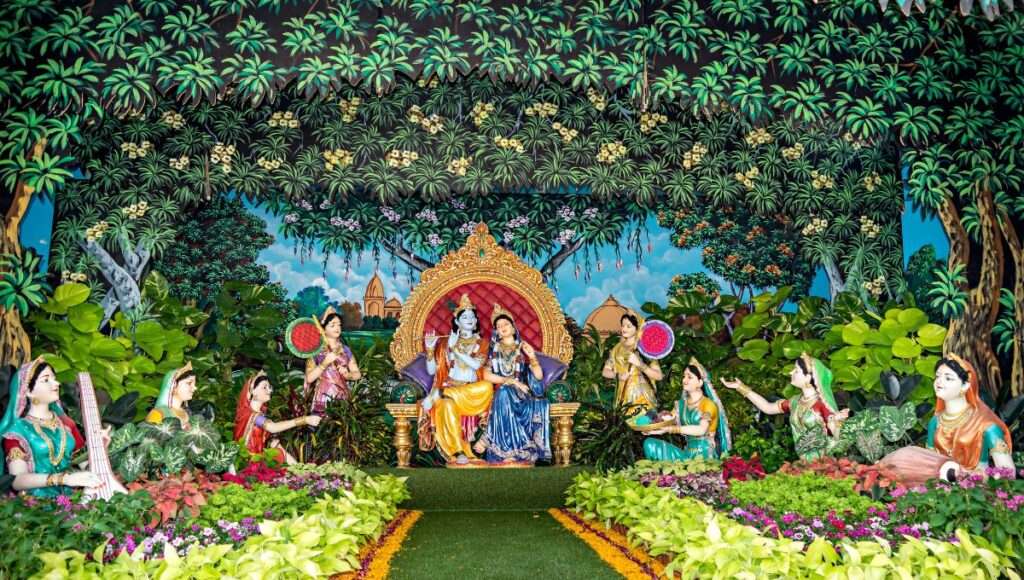
Did you know that Krishna Janmashtami is associated with various legends and traditions? 🤔
Krishna Janmashtami is not only a celebration of Krishna’s birth, but also a commemoration of his many deeds and miracles. There are many legends and traditions that are linked to this festival, such as:
- The legend of Nandotsava, which is the celebration of Krishna’s birth by his foster parents Nanda and Yashoda in Vrindavan. They distributed sweets, gifts, and clothes to everyone in the village and decorated their home and temple with flowers, lamps, and flags. They also invited the cowherds and gopis to join them in singing and dancing in joy12.
- The legend of Dahi Handi, which is the reenactment of Krishna’s childhood prank of stealing butter from the earthen pots hung high by the gopis. The pots are filled with curd, butter, or milk and hung from a rope or a pole. Young men form human pyramids to reach and break the pots, while women throw water or flowers at them to stop them. The one who breaks the pot is rewarded with money or prizes12.
- The legend of Rasa Lila, which is the divine dance of love between Krishna and Radha and the other gopis in the forest of Vrindavan. It is said that on this night, Krishna multiplied himself into many forms and danced with each gopi individually, making them feel that they were his only beloved. The dance lasted for a night, but it seemed like an eternity for the lovers12.
- The tradition of fasting, which is the practice of abstaining from food and water until midnight, the time of Krishna’s birth. It is done as a sign of devotion and purification for Krishna. Some people also observe a partial fast, where they eat only fruits, milk, or other light food items12.
- The tradition of Jagarana, which is the practice of staying awake all night and chanting Krishna’s names, listening to his stories, or performing his worship. It is done as a way of expressing one’s love and eagerness for Krishna. Some people also perform cultural programs like music, dance, drama, or poetry in honour of Krishna12.
These legends and traditions add more fun and meaning to the festival of Krishna Janmashtami. They show how people celebrate Krishna’s birth in different ways and express their devotion and admiration for him.
Fact #6: Krishna Janmashtami has different names and dates in different regions
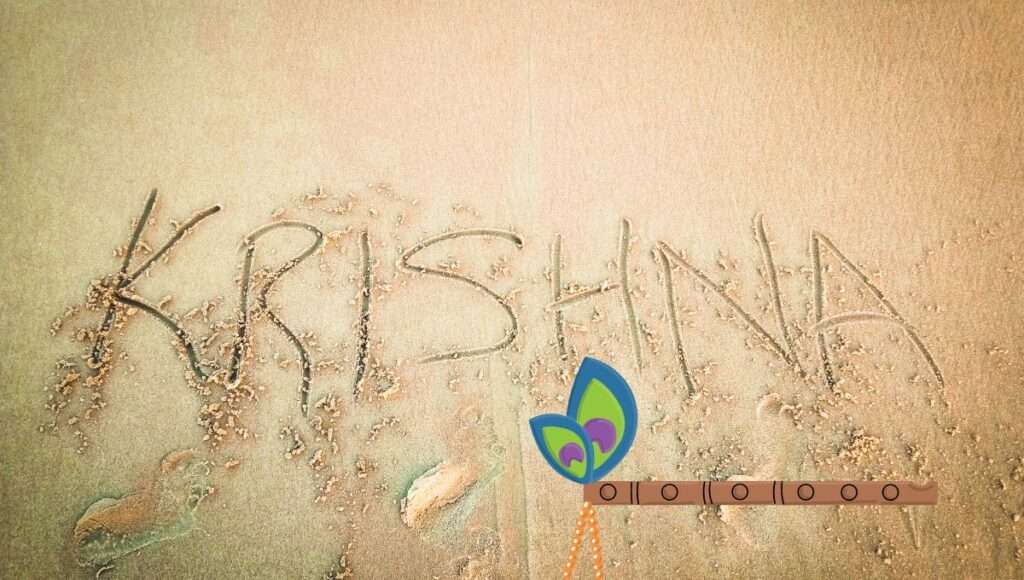
Did you know that Krishna Janmashtami has different names and dates in different regions? 🤔
Krishna Janmashtami is not a uniform festival across India or the world. It has different names and dates depending on the region, culture, or calendar followed by the people.
Some of the different names and dates of Krishna Janmashtami are:
- Gokulashtami or Ashtami Rohini: This is the most common name and date of Krishna Janmashtami. It is celebrated on the eighth day of the dark fortnight of the month of Bhadrapada (August–September) according to the Hindu lunar calendar. It is observed mainly in northern India, where Krishna was born12.
- Sri Jayanti or Sri Krishna Jayanti: This is another name for Krishna Janmashtami. It is celebrated on the same date as Gokulashtami or Ashtami Rohini. It is observed mainly in southern India, where Krishna’s devotees are more prevalent12.
- Sri Krishnashtami or Krishnashtami: This is another name for Krishna Janmashtami. It is celebrated on the same date as Gokulashtami or Ashtami Rohini. It is observed mainly in eastern India, where Krishna’s teachings are more popular12.
- Saatam Aatham or Gopal Kala: This is another name for Krishna Janmashtami. It is celebrated on the next day after Gokulashtami or Ashtami Rohini. It is observed mainly in western India, especially Gujarat and Maharashtra, where Dahi Handi is a major attraction12.
- Kalashtami or Rohini Vrat: This is another name for Krishna Janmashtami. It is celebrated on the eighth day after the full moon of the month of Bhadrapada (August–September) according to the Hindu solar calendar. It is observed mainly in Kerala, where Krishna’s temples are more ancient12.
- Janmashtami or Krishna Janmashtami: This is the generic name for Krishna Janmashtami. It is celebrated on different dates according to different regional calendars. It is observed by Hindus all over the world, regardless of their location or culture12.
These different names and dates of Krishna Janmashtami reflect the diversity and richness of the Hindu tradition. They show how people adapt and adjust their festivals according to their local contexts and preferences.
Fact #7: Krishna Janmashtami is influenced by various art forms and media
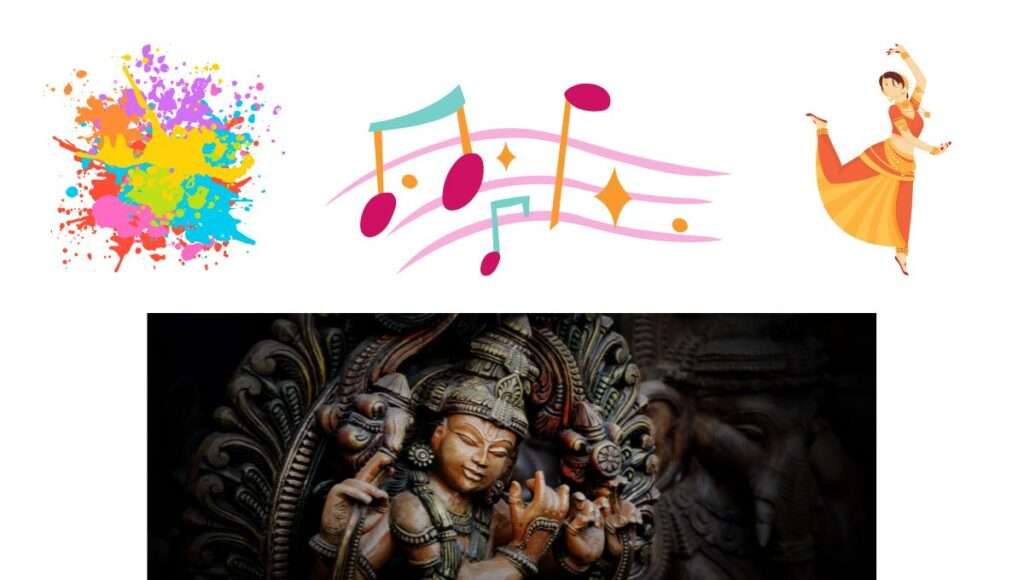
Did you know that Krishna Janmashtami is influenced by various art forms and media? 🤔
Krishna Janmashtami is not only a religious festival but also a cultural phenomenon. It has inspired and been influenced by various art forms and media, such as:
- Painting: Krishna Janmashtami has been depicted in various paintings by different artists and schools of art. Some of the famous paintings are:
- The Birth of Krishna by Raja Ravi Varma, a 19th-century Indian painter who blended European realism with Indian aesthetics3.
- The Swing by Abanindranath Tagore, a 20th-century Indian painter who pioneered the Bengal School of Art and revived the Indian style of painting4.
- The Flute Player by Nandalal Bose, a 20th-century Indian painter who was a disciple of Abanindranath Tagore and a leader of the Indian modern art movement5.
- Sculpture: Krishna Janmashtami has been carved in various sculptures by different artists and styles of art. Some of the famous sculptures are:
- The Keshava Temple at Somnathpur, a 13th-century temple in Karnataka that features intricate carvings of Krishna’s life and pastimes on its walls and pillars6.
- The Jagannath Temple at Puri, a 12th-century temple in Odisha that houses the wooden idols of Jagannath (Krishna), Balabhadra (Balarama), and Subhadra (Krishna’s sister).
- The ISKCON Temple at Vrindavan, a 20th-century temple in Uttar Pradesh that showcases the marble statues of Radha-Krishna, Chaitanya Mahaprabhu (a 16th-century saint who propagated Krishna bhakti), and the ISKCON founder A.C. Bhaktivedanta Swami Prabhupada.
- Music: Krishna Janmashtami has been sung in various songs by different singers and genres of music. Some of the famous songs are:
- Govinda Aala Re by Mohammed Rafi, a 20th-century Indian playback singer who sang this popular song for the Bollywood movie Bluff Master in 1963.
- Hare Rama Hare Krishna by Asha Bhosle and Usha Iyer, two 20th-century Indian playback singers who sang this catchy song for the Bollywood movie Hare Rama Hare Krishna in 1971.
- Achyutam Keshavam by Anup Jalota, a 21st-century Indian devotional singer who sang this melodious song for his album Bhajan Sandhya in 2005.
- Dance: Krishna Janmashtami has been performed in various dances by different dancers and styles of dance. Some of the famous dances are:
- Bharatanatyam by Rukmini Devi Arundale, a 20th-century Indian dancer who revived this classical dance form and founded the Kalakshetra Foundation in Chennai.
- Kathakali by Kalamandalam Krishnan Nair, a 20th-century Indian dancer who popularized this classical dance form and portrayed Krishna’s character with grace and expression.
- Odissi by Kelucharan Mohapatra, a 20th-century Indian dancer who revived this classical dance form and choreographed many dance dramas based on Krishna’s life and pastimes.
- Drama: Krishna Janmashtami has been enacted in various dramas by different actors and playwrights. Some of the famous dramas are:
- Andha Yug by Dharamvir Bharati, a 20th-century Indian writer who wrote this epic play based on the Mahabharata war and its aftermath, where Krishna plays a pivotal role.
- Radha-Krishna by Rabindranath Tagore, a 20th-century Indian writer who wrote this lyrical play based on the love story of Radha and Krishna.
- Krishnayan by Kajal Oza Vaidya, a 21st-century Indian writer who wrote this novel based on the psychological and emotional aspects of Krishna’s life and relationships.
- Film: Krishna Janmashtami has been portrayed in various films by different actors and directors. Some of the famous films are:
- Shri Krishna Janma by Dhundiraj Govind Phalke, a 20th-century Indian filmmaker who made this silent film in 1918 as the first Indian film on Krishna’s life.
- Jai Shri Krishna by Homi Wadia, a 20th-century Indian filmmaker who made this film in 1955 as the first Indian film in Technicolor on Krishna’s life.
- Little Krishna by Rajiv Chilaka, a 21st-century Indian animator who made this animated series in 2009 as the first Indian animation on Krishna’s childhood adventures.
- Television: Krishna Janmashtami has been telecasted in various television shows by different actors and producers. Some of the famous shows are:
- Shri Krishna by Ramanand Sagar, a 20th-century Indian producer who made this television series in 1993 as the first Indian television adaptation of Krishna’s life.
- RadhaKrishn by Siddharth Kumar Tewary, a 21st-century Indian producer who made this television series in 2018 as the first Indian television adaptation of Radha and Krishna’s love story.
- Paramavatar Shri Krishna by Yash A Patnaik, a 21st-century Indian producer who made this television series in 2017 as the first Indian television adaptation of Krishna’s life with special effects.
These art forms and media have influenced and been influenced by Krishna Janmashtami. They have helped to spread and popularize the festival among different audiences and generations. They have also helped to preserve and enrich the cultural heritage and legacy of Lord Krishna. 🙏
Fact #8: Krishna Janmashtami is related to other festivals and occasions
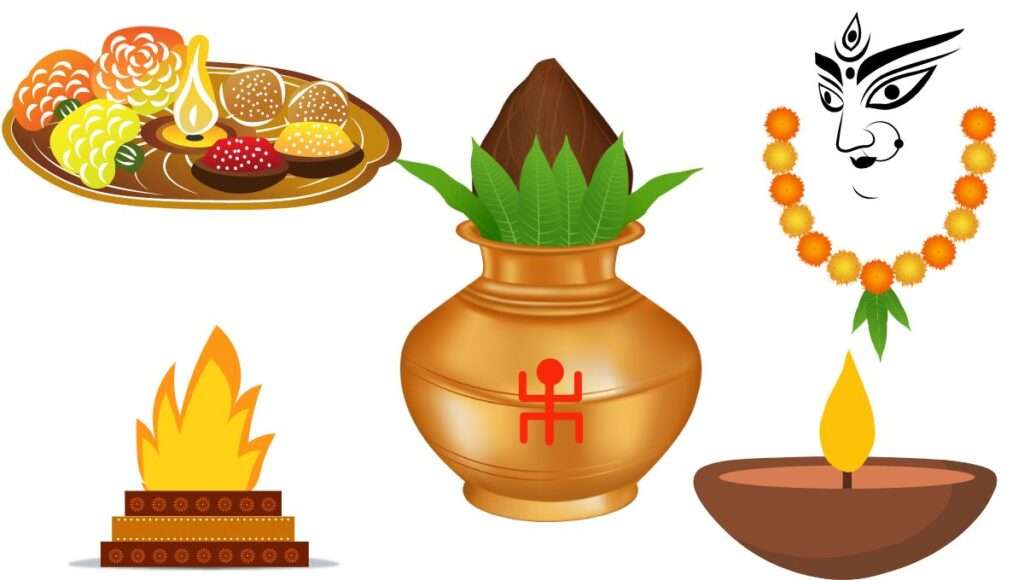
Did you know that Krishna Janmashtami is related to other festivals and occasions? 🤔
Krishna Janmashtami is not an isolated festival but a part of a larger cycle of festivals and occasions that are connected to Lord Krishna and his devotees. Some of these festivals and occasions are:
- Nandotsava: This is the festival that follows Krishna Janmashtami. It is celebrated on the next day after Gokulashtami or Ashtami Rohini. It marks the joyous occasion of Nanda and Yashoda welcoming their son Krishna into their home in Vrindavan. It is also known as Nanda Mahotsava or Nand Utsav.
- Radhashtami: This is the festival that celebrates the birth of Radha, the eternal consort and beloved of Lord Krishna. It falls on the eighth day of the bright fortnight of the month of Bhadrapada (August–September) according to the Hindu lunar calendar. It is observed mainly by the followers of Gaudiya Vaishnavism, who consider Radha as the supreme goddess and the source of all love.
- Govardhan Puja: This is the festival that commemorates the miraculous feat of Lord Krishna lifting the Govardhan hill on his little finger to protect the people of Vrindavan from the wrath of Indra, the king of gods. It falls on the fourth day of Diwali, the festival of lights, which usually occurs in October or November according to the Hindu lunar calendar. It is also known as Annakut or Bali Pratipada.
- Gita Jayanti: This is the occasion that marks the day when Lord Krishna delivered his immortal teachings to his friend and disciple Arjuna on the battlefield of Kurukshetra. It falls on the eleventh day of the bright fortnight of the month of Margashirsha (November–December) according to the Hindu lunar calendar. It is also known as Mokshada Ekadashi or Vaikuntha Ekadashi.
These festivals and occasions are related to Krishna Janmashtami. They show how Lord Krishna’s life and message are relevant and meaningful for different times and situations. They also show how his devotees celebrate his various manifestations and glories throughout the year.
Fact #9: Krishna Janmashtami has many benefits for health and wellness
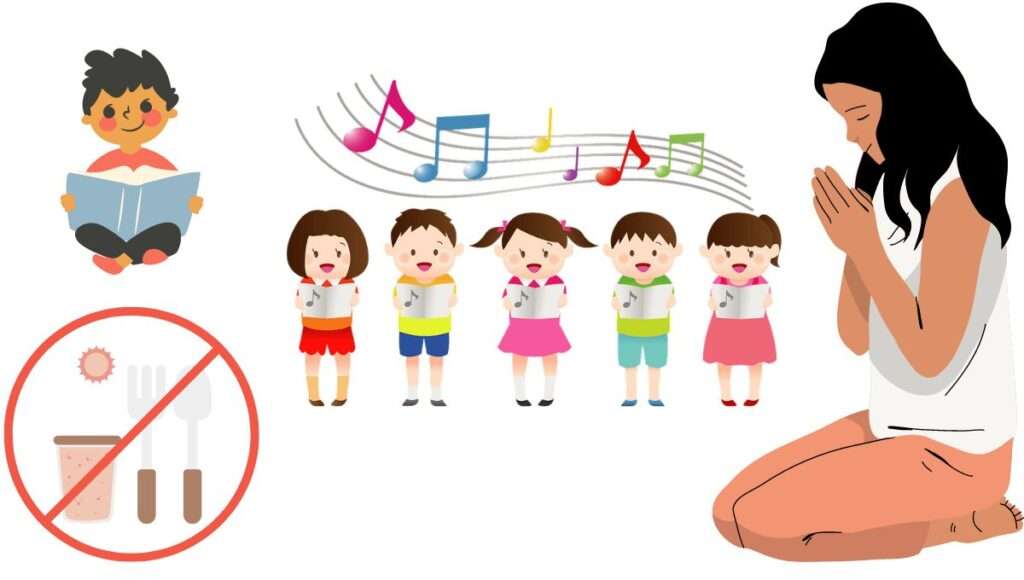
Did you know that Krishna Janmashtami has many benefits for health and wellness? 🤔
Krishna Janmashtami is not only a spiritual festival but also a holistic one. It has many benefits for health and wellness, such as:
- Fasting: Fasting on Krishna Janmashtami is a way of detoxifying and cleansing the body and mind. It helps to improve digestion, metabolism, immunity, and energy levels. It also helps to reduce weight, cholesterol, blood pressure, and blood sugar levels. It also helps to enhance mental clarity, focus, and concentration.
- Singing: Singing devotional songs or bhajans on Krishna Janmashtami is a way of expressing and experiencing joy and love. It helps to improve breathing, circulation, and oxygen levels. It also helps to reduce stress, anxiety, and depression. It also helps to boost mood, confidence, and creativity.
- Dancing: Dancing ecstatically or rasa lila on Krishna Janmashtami is a way of celebrating and honoring Lord Krishna. It helps to improve flexibility, balance, and coordination. It also helps to burn calories, tone muscles, and strengthen bones. It also helps to release endorphins, serotonin, and dopamine, which are the hormones that make us happy.
- Praying: Praying and meditating on Krishna Janmashtami is a way of connecting and communicating with the divine. It helps to improve awareness, mindfulness, and consciousness. It also helps to reduce ego, anger, and envy. It also helps to increase peace, happiness, and fulfillment.
- Reading: Reading or listening to Krishna’s stories and teachings on Krishna Janmashtami is a way of learning and growing from his example and wisdom. It helps to improve knowledge, understanding, and insight. It also helps to reduce ignorance, confusion, and doubt. It also helps to increase faith, devotion, and surrender.
These benefits are not only for the body but also for the mind and soul. They show how Krishna Janmashtami can help us achieve a balanced and harmonious state of being.
Fact #10: Krishna Janmashtami is a festival for everyone
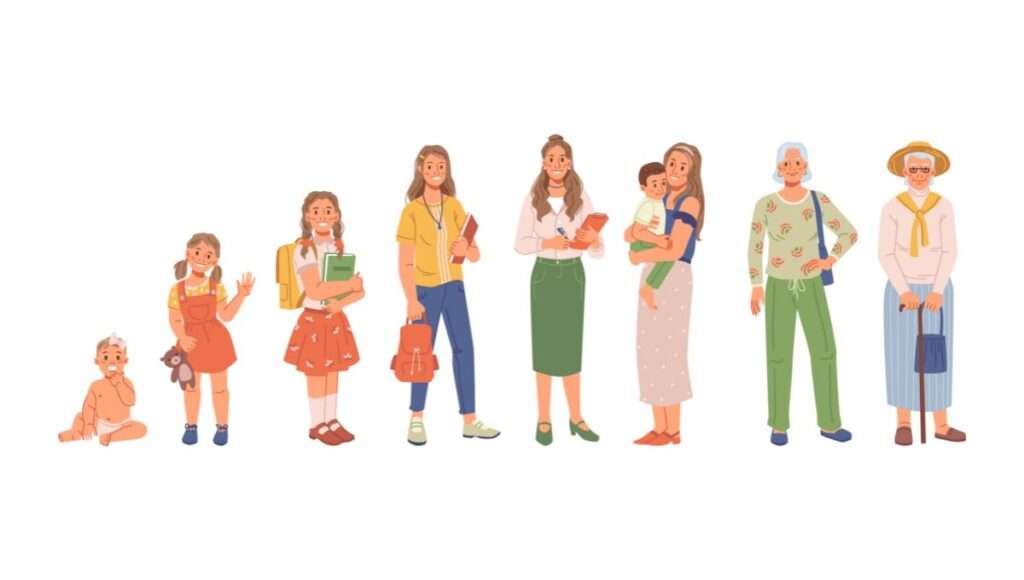
Did you know that Krishna Janmashtami is a festival for everyone? 🤔
Krishna Janmashtami is not a festival for a particular group or sect of people. It is a festival for everyone who loves Lord Krishna or wants to know him better.
Krishna Janmashtami is a festival for:
- Children: Children can enjoy Krishna Janmashtami by dressing up as Krishna or his associates, playing games like dahi handi or flute playing, eating delicious prasad like laddoos or makhan mishri, watching cartoons or movies on Krishna’s life, or listening to stories or songs on Krishna’s pastimes.
- Youth: Youth can enjoy Krishna Janmashtami by participating in cultural programs like music, dance, drama, or poetry on Krishna’s life, joining social service activities like feeding the poor or cleaning the environment in the name of Krishna, exploring spiritual topics like Bhagavad Gita or Srimad Bhagavatam with their friends or mentors, or visiting places like Vrindavan or Mathura where Krishna lived.
- Adults: Adults can enjoy Krishna Janmashtami by fasting and praying for their family’s well-being, offering food and flowers to Krishna’s idols or pictures, meditating on Krishna’s form and qualities, reading or listening to Krishna’s stories and teachings, or joining a community of his devotees.
- Elders: Elders can enjoy Krishna Janmashtami by sharing their experiences and wisdom with their younger generations, singing devotional songs or bhajans in praise of Krishna, visiting temples or holy places associated with Krishna, or chanting his names and mantras.
Krishna Janmashtami is a festival that transcends age, gender, caste, class, religion, nationality, and any other differences that may divide us. It is a festival that unites us in our love for Lord Krishna, who is the friend of all. 🙏
Conclusion
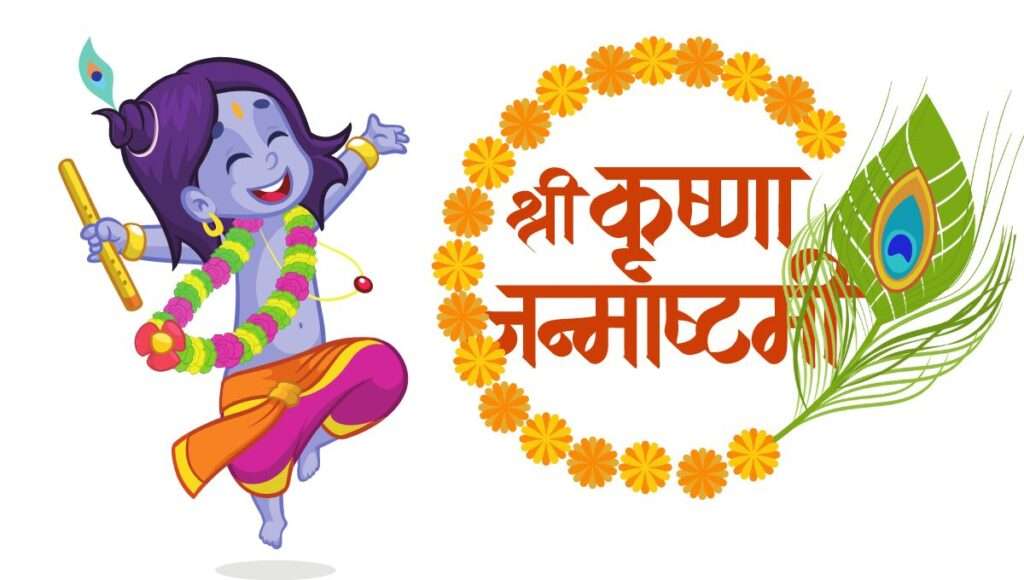
In this blog post , I have shared with you 10 amazing facts that you may not know about Krishna Janmashtami and why you should celebrate it.
I hope you have enjoyed reading this post and learned something new and interesting about this festival.
I also hope you have felt inspired to celebrate Krishna Janmashtami with full enthusiasm and devotion.
Krishna Janmashtami is not just a festival but also an opportunity.
It is an opportunity to:
- Celebrate the birth of Lord Krishna, who is the source of all joy and beauty.
- Commemorate the life of Lord Krishna, who is the embodiment of all wisdom and power.
- Start or deepen your spiritual journey with Lord Krishna, who is the ultimate teacher and guide.
So what are you waiting for?
Celebrate Krishna Janmashtami with your family and friends.
Sing, dance, pray, meditate, read, listen, visit, join, offer, dress up.
Do whatever makes you happy and connects you with Lord Krishna. And don’t forget to chant his names:
Hare Krishna Hare Krishna Krishna Krishna Hare Hare Hare Rama Hare Rama Rama Rama Hare Hare
Happy Krishna Janmashtami! 🎉🙏
If you liked this post, please share it with your friends and leave a comment below. I would love to hear your thoughts and feedback. 😊
Thank you for reading and stay tuned for more posts like this. 🙏
FAQs
What is the significance of the number eight in Krishna Janmashtami?
The number eight has a special significance in Krishna Janmashtami because Krishna was the eighth child of his mother Devaki, who was prophesied to give birth to the killer of her brother Kamsa. Krishna was also born on the eighth day of the dark fortnight of the month of Bhadrapada, which is considered an auspicious day for his birth. Moreover, Krishna is identified as the eighth avatar or incarnation of Lord Vishnu, who is the supreme god of Hinduism.
How is Krishna Janmashtami celebrated in different parts of India?
Krishna Janmashtami is celebrated in different ways depending on the region and culture of India. Some of the common festivities include:
- In northern India, especially in Mathura and Vrindavan, where Krishna was born and grew up, people decorate their homes and temples with flowers, lamps, and flags. They also sing devotional songs or bhajans, dance ecstatically or rasa lila, fast until midnight or nirjala upavasa, pray and meditate on Krishna’s form and qualities, read or listen to Krishna’s stories and teachings from scriptures like Bhagavad Gita and Srimad Bhagavatam.
- Visit temples or holy places associated with Krishna, offer food and flowers to Krishna’s idols or pictures, dress up as Krishna or his associates like Radha and gopis, and break pots of milk or butter or dahi handi to imitate Krishna’s childhood mischief.
- In western India, especially in Gujarat and Maharashtra, where Dahi Handi is a major attraction, people hang pots of curd, butter, or milk from tall poles in the streets. Young men form human pyramids to reach and break the pots, while women throw water or flowers at them to stop them. The one who breaks the pot is rewarded with money or prizes. People also fly kites and enjoy fairs and processions on this day.
- In southern India, especially in Kerala, where Krishna’s temples are more ancient, people celebrate Krishna Janmashtami on a different date according to the Hindu solar calendar. They observe a fast called Rohini Vrat and worship Krishna’s idol with sandalwood paste, flowers, fruits, and lamps. They also recite hymns and chants in praise of Krishna and perform cultural programs like music and dance.
- In eastern India, especially in Odisha and West Bengal, where Krishna’s teachings are more popular, people celebrate Krishna Janmashtami on the same date as Gokulashtami or Ashtami Rohini. They decorate their homes and temples with clay models of Krishna’s life and pastimes.
- They also sing devotional songs or kirtans, dance joyfully or sankirtan yatra, offer food and sweets to Krishna’s idols or pictures, dress up as Krishna or his associates like Arjuna and Subhadra, and enact dramas or jatras based on Krishna’s life and message.
What are some of the foods that are offered to Lord Krishna on his birthday?
Some of the foods that are offered to Lord Krishna on his birthday are:
- Laddoos: These are round balls made of flour, sugar, ghee (clarified butter), nuts, raisins, and cardamom. They are one of Krishna’s favorite sweets and are often associated with his childhood pranks of stealing them from his mother Yashoda or the gopis.
- Makhan Mishri: This is a mixture of fresh butter and rock sugar. It is another favorite delicacy of Krishna that he used to enjoy with his friends. It is also symbolic of his love for Radha, who used to churn butter for him.
- Panchamrit: This is a mixture of five ingredients: milk, yogurt, honey, sugar, and ghee. It is used to bathe the idol or picture of Krishna before offering it as prasad (the god’s leftovers that carry his favor) to the devotees. It is considered a sacred and auspicious food that purifies the body and mind.
- Puri: This is a deep-fried flatbread made of wheat flour, salt, oil, and water. It is often served with potato curry or halwa (a sweet dish made of semolina, sugar, ghee, nuts, raisins, and cardamom ). It is a common breakfast item that is offered to Krishna on his birthday.
- Kheer: This is a rice pudding made of milk, rice, sugar, saffron, nuts, raisins, and cardamom. It is a rich and creamy dessert that is offered to Krishna on his birthday.
What are some of the symbols that represent Lord Krishna?
Some of the symbols that represent Lord Krishna are:
- Flute: This is a musical instrument that Krishna used to play to attract everyone with his sweet melodies. It is a symbol of his charm, grace, and love. It also represents his teachings of the Bhagavad Gita, which are like music to the ears of his devotees.
- Peacock Feather: This is a feather that Krishna used to wear on his head or crown. It is a symbol of his beauty, majesty, and joy. It also represents his victory over the serpent Kaliya, who had poisoned the Yamuna River. Krishna subdued Kaliya and danced on his hoods, and the peacocks offered their feathers to him as a sign of gratitude and admiration.
- Lotus: This is a flower that Krishna used to hold in one of his hands or wear on his feet. It is a symbol of his purity, divinity, and compassion. It also represents his detachment from the world, as he remains unaffected by its pleasures and pains like a lotus that grows in the mud but does not get stained by it.
- Cow: This is an animal that Krishna used to protect and care for as a cowherd boy in Vrindavan. It is a symbol of his kindness, generosity, and service. It also represents his nourishment and sustenance for all living beings, as he provides them with milk, butter, and other products.
How can one celebrate Krishna Janmashtami at home?
Krishna Janmashtami at home by following some simple steps, such as:
- Clean and decorate your home and temple or altar with flowers, lamps, and flags.
- Prepare some food and sweets that are offered to Lord Krishna on his birthday.
- Dress up as Krishna or his associates or wear new clothes.
- Sing devotional songs or bhajans in praise of Krishna or listen to them online or on TV.
- Dance ecstatically or rasa lila to express your love for Krishna or watch them online or on TV.
- Fast until midnight or nirjala upavasa to purify yourself for Krishna or eat only fruits, milk, or other light food items.
- Pray and meditate on Krishna’s form and qualities or use a picture or an idol of Krishna or simply visualize him in your mind.
- Read or listen to Krishna’s stories and teachings from scriptures like Bhagavad Gita and Srimad Bhagavatam or other books or podcasts that explain his life and message.
- Visit temples or holy places associated with Krishna online or virtually if possible.
- Offer food and flowers to Krishna’s idols or pictures and distribute them as prasad to your family members.

